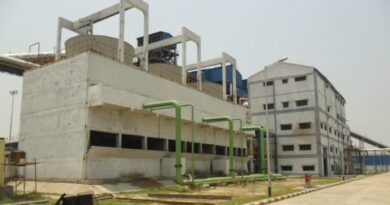Slipping up. Early signs in 2018-19 for renewables in India

The credit rating and research agency ICRA has come out with a comprehensive report on the near-run possibilities in the power sector. Within the power sector, the renewable energy segment is slated to witness a mixed trend when it comes to fresh capacity addition – while there would be a considerable momentum building in the wind sector, the solar sector is probably heading for somewhat subdued trend. That can’t be good news when it comes to meeting India’s overall renewable goal, as solar has a lions share in that.
In the ICRA forecast , the projected enhanced capacity in the wind energy sector will recover following a low year (2017-18) when only 1.7 GW was added. In 2016-17, wind had seen a robust year with fresh capacity addition of 5.5 GW. According to ICRA, the capacity addition drive almost nosedived owing to “ a transition from the existing feed-in tariff-based PPA regime to a competitive bid-based PPA regime, following the large reduction in tariffs discovered through the competitive bidding route against the earlier feed-in tariff regime.” During the course of the last fiscal, the states which led the pack of infusing fresh wind generation power included: Karnataka (758 MW), Andhra Pradesh (344 MW), Tamil Nadu (336 MW) and Gujarat (273 MW). However, in an overall sense the wind-based generation capacity increased to 34.0 GW as on March 31, 2018 against 32.3 GW as on March 31, 2017 – a negligible improvement considering the staggering 75 GW target by 2022 from wind power.
Now, with a marked improvement in project awards in the last fiscal, the agency has projected substantial capacity addition in 2018-19 vis-à-vis 2017-18. “The capacity addition in the wind power sector is expected to improve to about 3 GW in FY2019 backed by the project awards by Solar Energy Corporation of India Limited (SECI) and state distribution utilities since February 2017,” said Sabyasachi Majumdar, Senior Vice President & Group Head, ICRA Ratings. “SECI and the distribution utilities in Gujarat, Maharashtra and Tamil Nadu have issued bids for wind-power capacity of 7.5 GW over the past 14 months. This capacity is expected to be commissioned over the next 6-18 months, which would support capacity addition in FY2019 and FY2020.”
Meanwhile on solar power, which has generated more buzz in the market in the last couple of years, ICRA’s power report has projected a considerable drop of 40 percent in new capacity addition (4 to 4.5 GW in 2018-19) thanks to the drop in project awards and even cancellations in the recent past. The pricing pressure on PV module has also been cited as a key reason which may slow down the wheels. “The estimated fall in capacity addition in FY2019 is mainly on account of subdued trend in tendering of solar projects since June 2017 in the midst of several factors such as GST roll out in July 2017, an upward pressure on PV module price levels internationally and continued uncertainty on safeguard duty & anti-dumping duty post the petitions filed by solar module manufacturer associations between June and Dec 2017.Subdued trend in award of solar projects is also evident from the fact that only 4.5 GW capacity was auctioned & awarded in CY2017 as against 7.3 GW in CY2016,” Girishkumar Kadam, Sector Head & Vice President, ICRA Ratings, reasoned.
Going by ICRA’s analysis, 2018-19 could well turn out to be a disappointing year in terms of fresh capacity addition from two of the flagbearers of the renewable energy sector. The projected 7-8 GW incremental contribution from solar and wind combined could hardly mean making rapid strides in achieving that gigantic target of 175 GW by 2022. At the end of 2017-18, the estimated combined installed capacity of solar and wind had stood at 54 GW.
![]()




